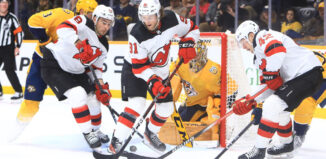High Intensity Interval Training and Hockey
By Katie Joly
Most collegiate and high-school hockey seasons are winding down, if not already over which means (sadly) that the off-season has begun. As a former player, I always found off-season training to be difficult because I preferred to run for long distances which didn’t give me any edge or benefit for the next season. In college, I started interval running; I would jog for one minute and sprint for thirty seconds for about 25 minutes. It wasn’t until my junior year of college that I was introduced to High Intensity Interval Training (HIIT) and I immediately saw how this new training routine would benefit anybody who used but more specifically, athletes that encountered quick, hard sprints during their sport.
The basic concept of HIIT was initially developed by a physiologist in Japan named Tabata. Leaving out all the physiology jargon, Tabata realized that people who intensly exercised for 20 seconds (full out effort) followed by a 10 second rest and repeated it eight times for a total of four minutes, showed greater improvements in their anaerobic and aerobic power than people who did moderate cardio for 60 minutes.
Instead of working out for a certain amount of time or duration like many people do, HIIT forces you to work at high intensity for a small amount of time, working as hard as you can, then rest and repeat. The WORK phase (20 seconds) can be most any exercise but should be one that requires intensity. For example, burpees or box jumps are great WORK exercises whereas calf raises or crunches would not be.
For ice hockey players, who experience short, hard sprints followed by a rest, using HIIT is a great offseason training tactic. Conditioning the legs is extremely important so using burpees, box jumps, squat jumps or jumping lunges as the WORK exercises would be most beneficial during offseason training. This type of training mimics quick, hard sprints to get the puck or that added burst of speed you need to blow by your defender.
My personal experience with HIIT has been varied and you can vary your training to fit your needs. Some trainers just use one exercise (as I described above) as the WORK but I’ve had experience where there are eight different exercises for twenty seconds each. Choose whichever method works best for you and your needs. HIIT is a great way to have an extremely intense workout in a short period of time. However, it is important to remember to continually challenge yourself if certain exercises become too easy. Ways to do this include increasing the work phase to thirty or forty seconds or adding weight to your exercises. So, as the offseason begins, instead of plodding along on the treadmill for an hour, take a few minutes and try high intensity interval training a few times per week to get a jump in your skates for next season!














Great article. I’m finally utilizing HIIT , and wish I would have found it sooner! Glad to hear that it worked for you.